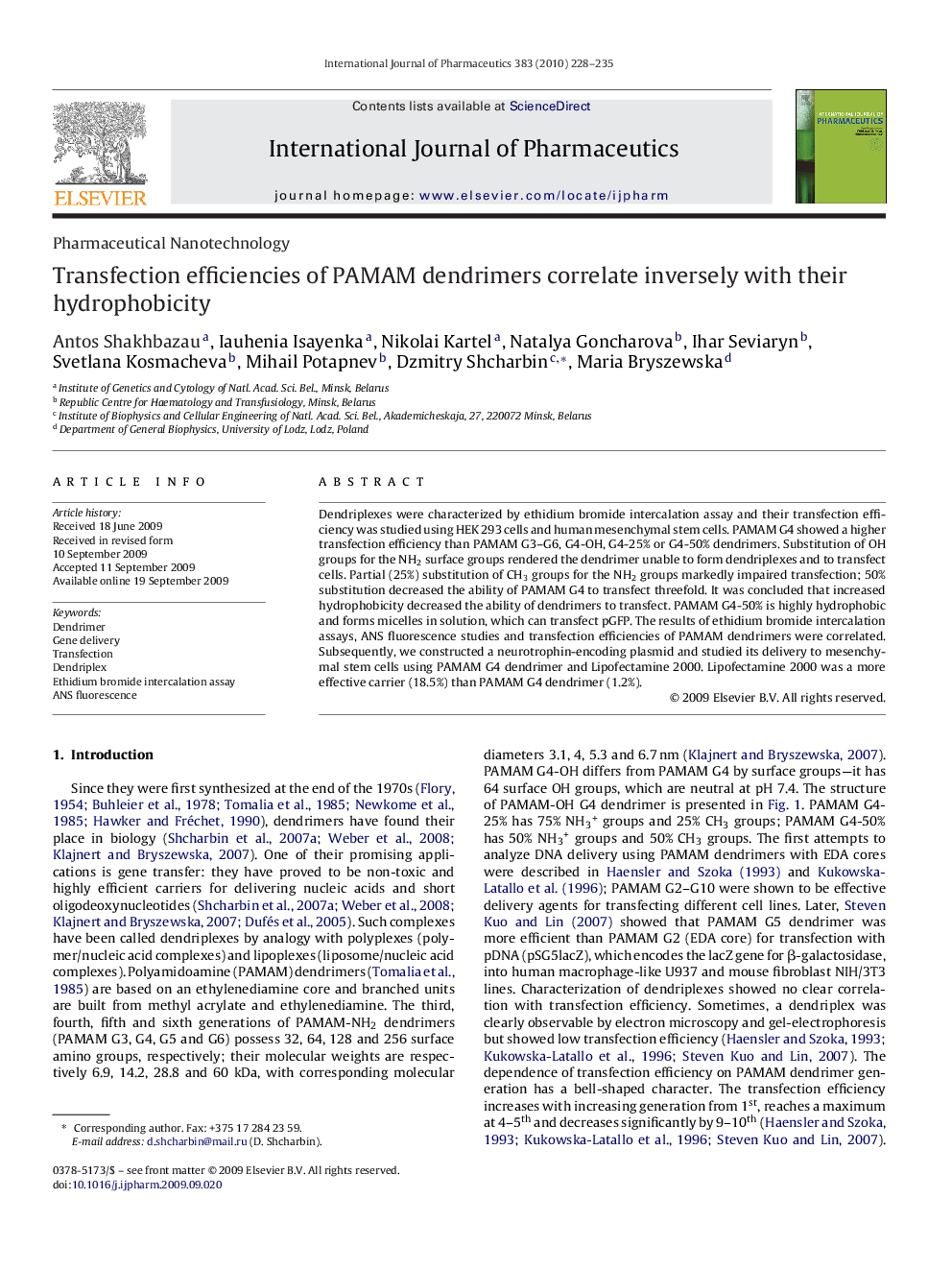| Article ID | Journal | Published Year | Pages | File Type |
|---|---|---|---|---|
| 2504579 | International Journal of Pharmaceutics | 2010 | 8 Pages |
Dendriplexes were characterized by ethidium bromide intercalation assay and their transfection efficiency was studied using HEK 293 cells and human mesenchymal stem cells. PAMAM G4 showed a higher transfection efficiency than PAMAM G3–G6, G4-OH, G4-25% or G4-50% dendrimers. Substitution of OH groups for the NH2 surface groups rendered the dendrimer unable to form dendriplexes and to transfect cells. Partial (25%) substitution of CH3 groups for the NH2 groups markedly impaired transfection; 50% substitution decreased the ability of PAMAM G4 to transfect threefold. It was concluded that increased hydrophobicity decreased the ability of dendrimers to transfect. PAMAM G4-50% is highly hydrophobic and forms micelles in solution, which can transfect pGFP. The results of ethidium bromide intercalation assays, ANS fluorescence studies and transfection efficiencies of PAMAM dendrimers were correlated. Subsequently, we constructed a neurotrophin-encoding plasmid and studied its delivery to mesenchymal stem cells using PAMAM G4 dendrimer and Lipofectamine 2000. Lipofectamine 2000 was a more effective carrier (18.5%) than PAMAM G4 dendrimer (1.2%).
